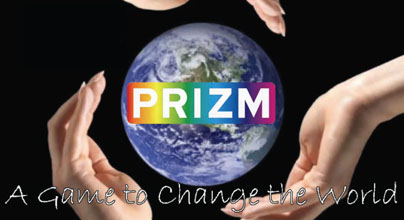
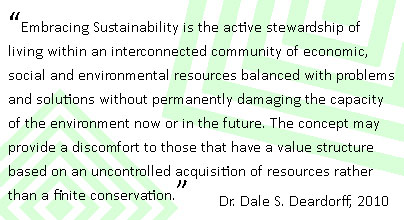

- Overview
- Process Map
- Idea Stories
- S.T.E.M. Ideas
- Case Studies
- Testimonials
- Panther Jack
- Coutimundi
Tool: PRIZM GameStorming:
Our goal is to help expose individuals and organizations into a new style of innovation and creativity model based upon a game. The game starts with a “Quest” which is the solution to a problem or an issue. Similar to Idealized Design you start the first step of the game with the end in mind. You are then channeled through a series of steps constructed to allow a cognitive decomposition of the problem into the Who, What and Where to expose interconnected influences and connected functions.
The game allows you to use the best thinking steps for divergence and convergence activities exploring possible solutions based upon science, biology, design and harmonics. The natural energy flow of the game allows collaborative synergies focused on achieving the game Quest.
Games are easy to play and allow everyone to become engaged participants. Working as a team of 3-5 players with a common goal eliminates adversarial thinking and opens dialog where one idea can build upon another ultimately creating a fun and natural flow of expression. All GameStorming particiapnts identify themselves with a unique and fun game-name to play the PRIZM game.
After the ideas are repopulated into five areas of materials and structures, coordination, internal control, relationships and applications a series of three stories are created. Stories are the backbone to the PRIZM process; it is the movement of defining transformational aspects within a narrative to dissect a problem into an understanding of the ideal state. This reassembled advance offers a mosaic of possibilities. So effective, it originated the recorded history and is one of the few common elements between all known civilizations; a PRIZM story contains a composite of integrated ideas which examine both the ideal and present state through a relatable focus.
Cheap Story – These are integrated ideas that meet the economic desire for a solution with an inexpensive solution. The proverbial Volkswagen versus Cadillac performance contradiction of what is really needed at a point in time. A Cheap idea meets all of the functional needs of the problem or contradiction but does not seem financially extravagant. A cheap story by no means indicates a poor quality solution.
Simple Story – These are integrated ideas that look for an uncomplicated solution that meets the objective – similar to a mathematician’s idea that may contains no parts. An intuition is a simple idea, it has only one object but besides that, it is also a conceptually unique solution to a potentially complex problem or contradiction.
Beautiful Story – these are integrated ideas that are based upon a uniqueness and originality that make them cognitively seem truly original. A beautiful idea has an element of what is well-formed and aesthetically pleasing.
A typical GameStorming event can hold three teams of 5 players (15 people) who can usually play 2 complete games per day. A typical game starts with a 30-45 min. intro into the PRIZM game history and objectives to get all participants ready and rules clarified. The game event usually takes 3-4 hours including a debrief of the stories.
The participants of the Sustainability GameStorming events freely allow the ideas to be submitted to the Bainbridge Graduate Institute in Seattle Washington for use in their MBA program on Sustainable Business. Ultimately partnering with BGI to prepare students from diverse backgrounds to build enterprises that are financially successful, socially responsible and environmentally sustainable.
Other Non-Profit organizations can run a PRIZM GameStorming event if the ideas that are generated are submitted back to the originating organization for consideration in resolving social paradoxes.
What is Needed:
PRIZM GameStorming events are facilitated by an official game guide. The Rocky Peak Leadership Center has two certified guides to help lead your group, team or organization thru a session.
Contact RPLC and arrange for either David Deardorff (Panther Jack) or Dale S. Deardorff (the Coutimundi) for booking details. If the event is local to the Los Angeles CA area there is no charge to the requesting organization. If an event is scheduled outside that area the cost of travel and lodging expenses are required.
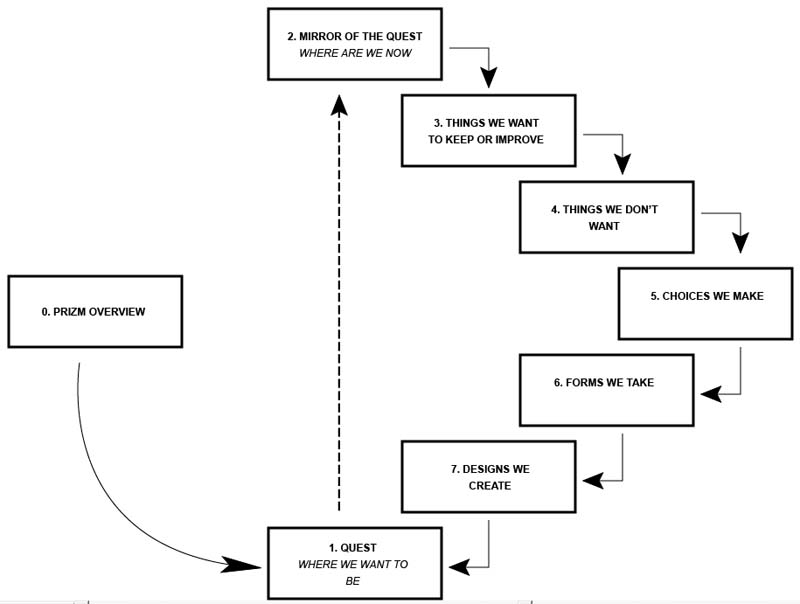
Copyright ©2011 Rocky Peak Leadership Center
| 0.0 Overview: PRIZM is a systemic and process based innovation process played as a game to create new ideas formulated as stories. It is a board game format that 3-5 participants sit around and follow seven timed steps to complete. The game starts with a Quest, which is the solution to a problem or an issue. Similar to idealized design, you start the first step of the game with the end in mind. Game participants are then channeled through a series of steps constructed to allow a cognitive decomposition of the problem into the “Who”, “What” and “Where” to expose interconnected influences and connected functions. The game encourages the use of the best thinking steps for divergence, and convergence activities: exploring possible solutions based upon science, biology, design and harmonics with a deck of card ideas, which embrace STEM design features and characteristics from previous proven design solutions. The natural flow of the game allows collaborative synergies focused on achieving the game quest. Games are timed and easy to play which allows everyone to become engaged participants. Working as a team of 3-5 players with a common goal eliminates adversarial thinking and opens dialogue where one idea can build upon another ultimately creating a fun and natural flow of expression. After the ideas are repopulated or separated into five areas of materials and structures, coordination, internal control, relationships and applications a series of three stories are created by the game participants. Stories are the backbone to the PRIZM process; it is the movement of defining transformational aspects within a narrative to dissect a problem into an understanding of the ideal state. This reassembled advance offers a mosaic of possibilities. A PRIZM story contains a composite of integrated ideas which examine both the ideal and present state through a relatable focus. Exploration through game context creates a meaningful framework for organizing the participants thoughts and idea creating process. Game Playing teaches you a strategy which is a process for structuring innovation divergence and convergence models and creating/conceptualizing ideas while having fun. This is an integration of learning objectives into gameplay. Throughout social and behavioural science discourse on social and cognitive development, gameplay is regarded as an important arena for the development and formation of critical thinking, team decision making and communication. This teamwork and collaboration, not competition creates a cooperative environment and a positive adaptive learning process to explore innovation and idea creating. |
| 2.0 Mirror Image of the Quest: The second step in the PRIZM game process is the development of the “Mirror Image of the Quest”. A Mirror Image of the Quest reveals a reflection of the current situation conceptually constructed from the original Quest. It is a companion Quest description of where we are now including all of the limitations, problems and perceptions. To create the Mirror Image of the Quest you should document the features and elements of the current system, situation, or object as it exist right now, at this moment in time. It should include all of the positive attributes and deficiencies that are collectively known. This step is one of the most difficult in the process because we are moving from a place of imagination into a place of analysis. This documentation should mirror and take into account all of the key characteristics of the original Quest you can think of so that you can understand exactly where you are starting from. Just like looking in a mirror you see a reflection that is Identical to the other except it is reversed. We want to create a current view of the who, what, where, when and how composition of the current scenario context awareness which we call our “Mirror Image of the Quest”. • What – The Object(s) or element(s) that exist in the current system • Who – The Person(s) or group(s) that exist in the current system • Where – The Place(s) or space(s) that exist in the current system • When – The Time(s) or season(s) that exist in the current system • How – The Function(s) or connection(s) that exist in the current system By combining our collaborative mental prowess, we can create an objective context which allows us to communicate written statement descriptions of what is helping or hindering our goals. This is essential for both dissection and documentation of our generated ideas. No international system of water governance exists. Water is owned by individual nations whose individual agendas usually only are collaborative to their financial stakeholders. Water Governance in the United States is controlled by PoWG and transboundry issues exist with Canada and Mexico. Current goals are to support water “clean water” but potable standards are different in different US states . Industrial water is monitored and controlled by the national standards of the EPA effluent guidelines. California agricultural water control is covered by the California Department of Food and Agriculture and partnerships for salinity control with the California aqueduct water flow from the Sierra Nevada mountains and is pumped and channeled by DWR to Central and Southern California. Water re-use management in California is also controlled by DWR. Individual states have individual control over their own natural resources. Water moving through the aqueduct system is used to generate electricity as it moves through dams and generating locations. In years of drought water flow is lowered to support only minimal flow leading to reduced energy creation. Leaks and breaks in the flow and drainage systems exist in the water transfer and transportation systems leading to delivery systems to agricultural growers. No smart technology exist to identify leaks, overuse or misuse. |
| 3.0 Things we want to keep or improve The third step in the PRIZM game process is the construction of the “Things we want to keep or improve”. In other words we want to plan from where we are moving to where we want to be. The Things we want to keep or improve is the 1st step in the innovation divergence process for identification of the positive system elements, components or things we have inside the “Mirror image of the Quest”. These Things that we want to keep or improve are separated into three categories defined as WHAT, HOW and WHERE. Everything in the known universe has these three attributes, things always “do things” somewhere! When probing or investigating, “Questions” for how, where, and what that can help you identify, analyze, synthesize and evaluate the current situation. The word question, stems from the Latin word quaerere (to ask, to seek). Just as ancient heroes would go on a quest, you are on a quest for meaning and understanding when you ask questions. Questions make you a participant in the active request for information. A great question should be well-timed and carefully formed to test and pinpoint problem areas to facilitate further investigation and study of the problem. PRIZM Questions are used to identify the positive features in the system that we want to keep. These can be people, processes, places, things, behaviors and functions. Additionally we identify any of those areas that we want to improve. You need to fill all three boxes with answers to these questions as a single word or phrase on a post-it note. You can deconstruct the information also by asking “WHO or what DOES WHAT to whom or WHERE?” Sample Statement – “THE CAT SAT ON THE MAT” WHAT = CAT HOW = SAT WHERE = THE MAT |
| 4.0 Things we don’t want The forth step in the PRIZM game process is to create ‘Things we don’t want”. These are negative aspects of the “Things we wanted to keep or improve” What, How and Where descriptions that we want to remove from the system. These are broken down into a material, function and environment separations that keep us from getting what we want. Things we don’t want are the 2nd step in the innovation divergence process and are where we explore a problem as a contradiction. Contradictions are conflicting situations inside a system which cause problems. These conflicts or contradictions inside a system can restrict the performance of the system. A contradiction occurs when we have a situation, in which inherent factors, actions or propositions create two directly opposing ideas. A “Round Square” is a simple example of a contradiction. Almost all contradictions create conflict with two different parameters, which means by improving one parameter of the system it causes deterioration of the other parameter. • An example of a “material” contradiction is something that must be stiff and ridged but also flexible to bend. • An example of a “function” contradiction would be that something needs to go fast and slow at the same time. • An example of an “environment” contradiction would be something needs to be hot and cold at the same time. In this PRIZM innovation process step you take each of the post-it notes from the previous step in the WHAT category and identify the things we don’t want from each one by asking all three questions. Write that word or statement down on a new post-it note and place it in the correct box. After you have identified the WHAT materials or structures stop us form being happy you move to the HOW are we stopped by being happy with our functions, actions or behaviors. Finally you move into the WHERE in the environment, space or time are we stopped from having what we need. |
| 5.0 Choices we make The fifth step in the PRIZM game process is the construction of “Choice we Make”. These Choices are the transformation step of idea creation in the PRIZM Innovation game. The PRIZM Game board has nine colored spaces where 62 individual PRIZM game cards are placed. These game cards are separated by color onto the corresponding spaces and are used as idea triggers to replace “Things we don’t want” from the previous step. The cards are used as random stimulus idea triggers which have two different aspects, the first is the visual trigger from the color picture image on one side and the other is the patterning trigger from a statement of words on the reverse side. This statement has been successful in the past to create a design solution associated with this specific problem or issue. These cards represent ideas that can be created using Science, Technology, Engineering, Math (STEM), Biology, Nature and Environmental previous design solutions that can help create a different way to conceptualize things and break out of existing patterns. The gameplay purpose of the cards is to allow the participant to start at the top of the red stack of cards to help players and teams to brainstorm new solutions to “Things we don’t want”. Start with the “WHAT” and move through all of the “Material”, “Function” and “Environment” deficiency statements one by one. Then move on the “HOW” and “WHERE” sections until all cards have been used. Ideas should be written on a small piece of sticky-note paper and adhered to the game card replacing it back into the originating color card pile. There are duplicate cards in some of the color card piles because previous successful ideas have been generated using those idea triggers. Each idea should be read out loud to the game participants to make sure it contains enough clarity and detail to be understood by everyone. If the idea needs additional refinement, asking the participant idea generator to “Tell me more” and documenting that will continue to refine the concept. At times it may be required for someone to create a small sketch or drawing to accompany the words because “a picture is worth a 1000 words” and a complex idea can be conveyed with just a single still image. You should explain to the game participants that they are to come up with a creative solution to the problem or contradiction, using the words on the cards as focus inspired by the idea triggers on the cards. Reveal the cards one at a time (typical gameplay) – or as a series (advanced gameplay) depending on the type of PRIZM game being played. |
| 6.0 Forms we take The sixth step in the PRIZM game process is the construction and convergence of the “Forms we take”. The “Forms” are the 1st step in the innovation convergence process. These Forms are broken down into 5 separate categories for Material & Structures, Coordination, Internal Control, Relationships and Integrity & Added Applications. These (5) categories represent a complete system description and can be used as separation boxes for all of the idea-post-it notes on top of the PRIZM idea cards. You start at the top of the ideas generated from the “Choices we make” Red color space and move them into any one of the categories that best fits by description and understanding of the idea statement. You repeat this process and move on to the Orange, Yellow, Green, Blue, Purple, Brown, White and finally the Black color space. The “Idea Park” wildcards cards are now reviewed to determine if they fit into this games “Quest” – if so they are added into the appropriate Forms we take category. If they do not fit with this “Quest” they are place to the side for review at a later time. The process for moving ideas into the categories should be a collaborative effort agreed to bay all game play members. Read the ideas out loud to make sure there is a clear understanding of the idea statement. If there confusion or ambiguity in the meaning of the idea it needs to be clarified by adding additional detail or structure. If necessary a sketch drawing or mini design can be constructed to accompany the idea. Everyone who is playing the game should be able to completely understand the new idea statements. Now that all of the ideas have been moved into the categories you should always have at least a minimum of three (3) cards in each area. |
| 7.0 Designs we create The final step in the PRIZM game process is to assemble 3 different “Designs we Create” in story form. This is accomplished by taking the ideas that were collected and reconstruct them into a format that flows and connects into a positive narrative description of a situation. Once the ideas have been categorized and separated into the 5 “Forms We Take”, a subset of them are transferred to the “Designs we Create” to illustrate three (3) independent stories. Start with the Material and Structures ideas and separate them individually into the area that fits the best for a Cheap, Simple or Beautiful Story. Repeat the process until you have the best ideas from each of the “Forms” inside the (3) stories. As a minimum you want to move 1 idea from each of these “Forms” over into the stories game locations. This will allow you to start construction of a story with at least 5 key ideas. These ideas are woven together to create a collaborative description of characters, new elements, design solutions, unique situations and resolved contradictions taking an audience on a desired journey to the resolution and fulfillment of some human need to matter. The crafting of PRIZM Stories are a way to create a sense of meaning and purpose taking the game players to a “place” where problems can be solved, negative situations can be overcome in a positive way and unique and novel solutions can be constructed. |
| 1.0 Quest: The first step in the PRIZM game process is the development of the “Quest”. A quest is all about seeking something important, and it involves a journey, sometimes with a great, but attainable distance. For example, you would travel the world in a quest for gold. You would not travel to the front of the school lunchroom in a quest for a peanut butter and jelly sandwich. There can be a mysterious and holistic connection to an inner world beyond everyday physical reality. A conceptual pathway where anything can be possible. It is used to gain clarity, define, find and explore patterns through a process of simplification which can create a sense of wonder and connection opening your mind. A PRIZM Quest is an adventure with a mission containing details about the context and the background. To create a Quest you must envision a “Journey” to a place, destination, situation or thing that does not currently exist. It must be narrow enough for you to have some level of control over it and it should represent an ideal final result. You should visualize an ideal solution that leverages advantages of the current system while disregarding any deficiencies. To accomplish this requires you to compose what the best possible solution to a problem, situation or contradiction is, regardless of the resources or constraints of the original problem. It is a positive mental “Journey” towards the discovery of a desired goal identifying the key resources or characteristics associated with its function, performance or operation in a perfect world. As a minimum it should contain a brief description of the who, what, where, when and why composition of a perfect scenario allowing us to live life more genuinely and courageously. This pathway feels right and is used to gain clarity to overcome the psychological law of inertia creating what is called a PRIZM “Quest”. “To create an international open source system of water governance that is comprehensive and health promoting for all life, useable for all water requirements and integrated from consumption to re-use”. |
PRIZM Game Idea Stories
The History of Storytelling
The story is a powerful tool. We tell stories to understand ourselves better. By exploring our inner selves through words and stories, we come to understand the “real” us that lives inside our bodies. The earliest forms of stories were past down orally, guided with gestures and expressions. To help the storyteller convey their message, cave paintings were formed, music developed, and dance discovered. The story itself would become a defining aspect of the culture due to its ability to survive after the storyteller’s death.
While the method by which we tell stories has changed, their importance to us has not. We live in a world with an unrelated information overload. While data, facts, statistics, and definitive answers to specific questions are immediately available from search engines on the internet. Many people need more than just facts to make a proper analysis; they need an understanding. They need a contextual meaning. They need a rational structure for comprehension. They want everything which a story inherently provides.
An idea story, allows the integration of a PRIZM game session into a narrative, which allows the participants to organize the new individual ideas into a structured format, which can be easily understood by the target audience. As you move through the PRIZM game, you selectively improve/optimize system elements with new ideas, which can move toward system ideality. In the context of the PRIZM game, we ultimately would never implement a new idea that would decrease a system's performance, functionality, or benefical charactersistics. While other idea collection processes rely on a disjointed/unconnected idea formulation process. The PRIZM game synthesizes idea components into this holistic solution record.
How do you tell an idea story?
Here are some simple criteria that every idea story must contain.
The Who - Introduce the characters, the people (resources) who are affected, or affect the solution record. Stories involve people so it is vital to describe them, and their roles within the idea story. There also needs to be an owner of the ideas, someone who is passionate enough about them to claim them, and who is persistent and rigorous enough to direct the idea story through the proper channels.
The What – Explain what happens next, or how the situation is resolved. some of the greatest advances in history have been “Eureka!” moments, points of brief spontaneous epiphany, where the thinker, or team has realized the solution to their problem just by looking at it from a new angle. As well, some of the greatest disasters in our history have been simple oversights (the titanic, the Hindenburg). It is therefore very important to include all of the details of the idea and process into the narrative.
The Where - Set the scene, it is important to illustrate the time and place. What are the features of the location? This often involves the challenges or difficulties that must be overcome. Your ideas could meet with many types of resistance, and understanding the forces that are intending to work against it will be critical for it to find success. The clarity of understanding and explaining the elements of the idea story are critical. One must articulate the entire spectrum of being, like in water it's possible for it to exist as a liquid, a solid, or a vapor, depending on the temperature of the environment. The cost, schedule, and resources of the business can all subvert an otherwise brilliant plan.
Example Idea Solutions
If the process is followed, the PRIZM game will output 3 separate idea stories. The following sample was created at a 2010 session in Bakersfield California with a sustainability “Quest” of how to co-exist with the endangered Kit Fox:
Cheap Story (easy to implement) – Create a “pilot” program to use recycled junk cars as material to build kit fox ‘Super’ dens. Provide the kit fox population with a well balanced and recycled food supply. If the program is a successful we will implement in other areas and advertise our success.
Simple Story (not complex) – Create a den community protected by fenced areas and provide a balanced kit fox “chow” that will be relocated regularly to promote kit fox hunting skills.
Beautiful Story (novel and unique) - Create kit fox community islands surrounded by water barriers and create inter-island connections via the kit fox super highway and Modify city regulations to suspend the endangered species act within the city limits allowing residents to drop off unwanted rodents for recycling.
The PRIZM Innovation Game is based upon creating new ideas focused on STEM, biology and nature features or characteristic cards that can help stimulate the creation of collaborative, revolutionary new ideas.
Our goal is to help expose young individuals into a new style of innovation and creativity model based upon a game. The game starts with a “Quest” which is the solution to a problem or an issue. Similar to Idealized Design, you start the first step of the game with the end in mind. Participants are then channeled through a series of steps constructed to allow a cognitive decomposition of the problem into the who, what and where to expose interconnected influences and connected functions.
The game encourages the use of the best thinking steps for divergence, and convergence activities: exploring possible solutions based upon science, biology, design and harmonics with a deck of card ideas, which embrace STEM design features and characteristics from previous proven design solutions. The natural flow of the game allows collaborative synergies focused on achieving the game “Quest.”
Games are timed and easy to play which allows everyone to become engaged participants. Working as a team of 3-5 players with a common goal eliminates adversarial thinking and opens dialogue where one idea can build upon another ultimately creating a fun and natural flow of expression. All GameStorming participants identify themselves with a unique and fun personal game-name to play the PRIZM game.
PRIZM Game Cards
There are 62 PRIZM game cards used for a PRIZM game. These cards are random stimulus idea triggers which have two different aspects, the first is the visual trigger from the color picture image on one side and the other is the patterning trigger from a statement of words on the reverse side. These cards represent ideas that can be created using Science, Technology, Engineering, Math (STEM), Biology, Nature and Environmental previous design solutions.
Science Cards:
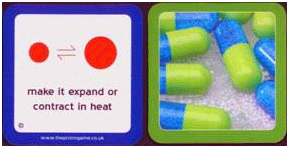
Science is the study of the phenomena of the material universe and their laws in the natural world including physics, chemistry, geology and biology.
There are 8 unique cards from different areas that explore introduction of doing the opposite of what is expected, making it self-sustaining, use of all waste, making it work before it is needed, adding or using a new dimension, making it expand or contract in heat, making things rust, making it regenerate and making all parts of one substance.
Technology Cards:
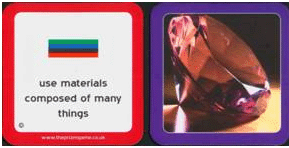
Technology is the usage and knowledge of tools, techniques, crafts, systems or methods of organization in order to solve a problem or create a new perspective that significantly affect the ability to control and adapt to the existing environment.
There are 9 unique cards from different areas that explore introduction of distribution of an action, using liquid or air, using a messenger, change in the density, temperature or flexibility, making it change shape, release or absorbing energy, making it cheap or disposable, using material composed of many things, putting something inside something else, and using a harmful thing to its advantage.
Engineering Cards:
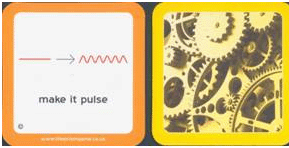
Engineering is the discipline, art, and profession of acquiring and applying scientific, mathematical, economic, social, and practical knowledge to design and build structures, machines, devices, systems, materials and processes that help create solutions to the needs of society.
There are 9 unique cards from different areas that explore this introduction of feedback, making it pulse, making things spherical or circular, making it transparent or changing color, putting holes into it or filling the holes, making it vibrate, changing the shape to be irregular, making things move or adjust, and replacement of mechanical things with sensory ones.
Math Cards:
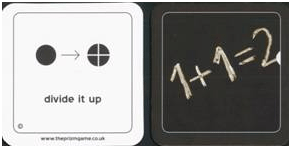
Mathematics is the study of quantity, structure, space, and change. Mathematicians seek out patterns, formulate new conjectures, and establish proposed numerically based truths by rigorous deduction from the use of abstraction & logical reasoning, evolving from counting, calculation, measurement, and the systematic study of the shapes and motions of physical objects.
The mathematical themed cards explore 5 unique areas such as division from dividing, subtraction and fractions from removal, addition, pre-algebra strategies and notions from combining things, duplication, replication and variables from making a copy and finally continuation and infinity by “don’t stop-keep going” triggers.
Additional Cards:
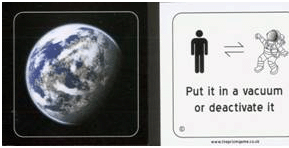
(10) Additional “wild cards” are supplied in the PRIZM deck that contain additional subjects and areas that can be customized for NASA technology spin-off’s.
European Aerospace Manufacturer
A European Aerospace manufacturer, the Wing Physics Division had an unexpected change in the design specification requirement which drove a new wing design. There were three choices for a new wing design but not enough time to use standard design process for the complete evaluation for each option. The problem was to select a design in three weeks instead of usual eighteen month timeframe. The client applied a PRIZM SuperCell session with the core design group of five engineers and eight related stakeholders. The outcome was twenty possible actions that could be taken to achieve the desired outcome. Five actions combined meant that they could choose one of the three design options. This meant that this design process was changed from a 18 month lead time and on the programme critical path to a design process completed within three weeks and no delay impact on the overall programme. And the engineers were happy.
International Branded Kitchen Equipment Manufacturer
An international branded kitchen equipment design through to distributor wished to ensure they captured leading innovation in their product designs. The founder and executive vice president of product development wanted to create a new cutting device with an elegant core design supporting low cost through to premium product categories and pricing. The goal was to have an elegant cutting device however low production cost. PRIZM GameStorming and ExpandedFocus was used in sessions spread of two days. The end result was three distinct product concepts for different unit cost levels yet reflecting premium products to department stores and standard product offerings to discount stores in the USA market. All are elegant in design and easy for customers to use.
The founder said that this process of just two days compares to the usual design process that typically takes 60 days yielding a massive saving in engineering time and also the ability to come to market quicker. The Founder was most impressed by the fact that the time saving would mean they could spend the effort in ensuring the designs were market leading and so maintain the recognised market leader position for innovation.
Aerospace Manufacturer
Aerospace manufacturer, Structures Division was at the early design stage and a decision was made to move the engine locations. This meant that several new locations needed to be assessed and the key problem was vibration transfer into the passenger cabin area via engine pylon fixings. There were currently no candidate solutions. The client applied a PRIZM SuperCell session over a period of two days with the core design group of eight engineers. The outcome was fifteen new fixings and vibration damping solutions options.
These solutions were seen as useful and unique enough to be patented.
Fashion Apparel and Shoes
The global market leader in Sports Fashion Apparel and Shoes took part in a PRIZM GameStorm. The quest they set was to increase the uptake of training and its recognised value to the organization. This is a long term perennial problem in training. Although the core training group of four executives have been working together for several years they were surprised and delighted to develop a new measurement method on how people were taking up training and the value the company got from it; and a new strategy to market training to department heads. They were excited by depth of innovative solution gained in just a few hours and recognised the value in running PRIZM sessions. PRIZM Innovation is in discussion to implement a long term innovation partner program.
Manufacturing Logistics
A manufacturing company’s logistics arm of a large international multinational corporation needed to ship high value engineering products between company sites in several countries and multiple locations. Each equipment used a transportation crate which was semi-custom yet often be reused. The equipment had a comprehensive tracking system yet the transportation of the boxes had little. The transportation boxes were stored between use in the local shipping warehouse. The problem was to avoid making excess transportation boxes and so needed a simple logistics tracking system. The PRIZM SuperCell session was used to identify the logistics information needed for effective tracking. This took one day involving five managers. The outcome was that the key design elements of the tracking system were identified and provided the input for a requirement study to take place prior to the design of a tracking system.
European Aerospace Manufacturer
The Cabin Systems Division of an Aerospace Company needed to simplify the design of a future passenger cabin. At the conceptual design stage for a future passenger cabin to simplify three and integrate three sub-systems: electrical, plumbing and air supply subsystems. They wished to identify four options on a continuum from classic approach on sequential build, test and installation into the aeroplane structure to an advanced approach of a parallel subsystem build, integration. The client applied the PRIZM GameStorm sessions, on the four options over a period of two days with the core design group of multi-disciplinary fifteen engineers. Each option gave ten to fifteen useful ideas. The outcome was to simplify the complexity of the problem into a way in which the problem could be clarified and codified so that a design programme could be developed to work on the design ideas.
Established Telecommunications Company
A small SMS text telecommunications company in Malaysia wished to determine a new growth strategy to increase sales volume of SMS and Voice over IP call traffic. A shortened PRIZM GameStorm session with the two founder owners and two marketing consultants was held. The outcome of the session was that the founders remembered that their passion for business was creating innovative solutions that earnt great cash flow and that pursuing growth would not necessarily achieve that. They realised that they were too conservative and were hoarding cash and reluctant to spend top dollars to hire a sales man. The strategies for growth meant enhancing the sales capability and they determined an innovative method for selecting an aggressive salesman that had and shared their core conservative and family values.
Social Enterprise Start up Company
The start-up company had eighteen founding members and when determining the goals they became anxious as to whether the team could deliver the commitment and capability. The founding members wanted a strategy that the team could be committed to work together and to prove this to prospective customers. A PRIZM GameStorm session was held over a day involving eight of the 18 founders. At the end of the second game there were valid three strategies, one of which could be implemented immediately. In addition the issues raised could also be used as a process for ongoing building of trust and commitment. One strategy was executed immediately by the founding members.
EcoTextiles Social Enterprise
An start-up social enterprise wished to effectively launch a new range of organic naturally dyed textiles with rainforest botanical designs. The three founders ran a PRIZM GameStorm for a day in Los Angeles to determine a low cost and effective strategy to launch and market the eco-textiles. The outcome was a greater shared understanding of the passion and purpose of the business and several innovative ways to engage the Brazilian community and the Wholefoods supermarkets and related outlets in Los Angeles.
Property Investment Company
An established set of very successful property investors wished to take their successful investment model and start-up an Asia-wide investment club. The key issue was how to get services agreements in place between the hubs in different capital cities across Asia. The PRIZM GameStorm was played for a half day with four of the business founders present. During the session greater clarity of how the business needed to be structured to become an international organisation became clear with roles and responsibilities for different parts of the organization. The outcome was a clear action plan of issues to be resolved by the founding partners prior to setting up more of the organization. This saved expenses mistakes in setting up education centres in Australia which would have been premature and wasted.
Group Coaching – Survive and Thrive
A group of four consultants in Los Angeles came together to determine survive and thrive strategies. The PRIZM GameStorm session was payed for a half day. The outcomes were innovative ways for collaboration between the consultants and exciting areas to use clients as reference sites to drive new business. There were also low cost and simple ways of using internet based technology such as creating audio and video testimonials, creating a collaborative consultants web-site. Hosting a blog of key issues facing their clients, all of which would serve as a window to generate sales leads, add value and individually deepen their relationship with existing clients.
Executive Coaching
A Group coaching of Senior Executives in a large company was undergoing restructuring due to economic constraints. This meant that the three senior executives needed to be redeployed across the organisation. A group coaching session was set up using the PRIZM SuperCell so that three executives playing together created clarity on career path options and providing criteria for career path decision making. Each was able to get insights and make informed decisions on their preferred career path in the organization and also the benefits to the organisation in terms of being more resilient.
Lifestyle Coaching of a Husband and Wife
The UK economic climate meant that house prices were falling, and the couple wished to get more clarity of their criteria for buying an investment property. A single PRIZM ExpandedFocus session was held over a day. The couple put forward their criteria, potential issues and concerns. The end result was that in the game process, arising from the discussion of what they wanted and what they did not want, they realised that they did not want to buy an investment property and instead wanted to buy a home in anticipation of starting a family. The couple gained greater clarity of their lifestyle in terms of exposing their emotional needs in combination with their financial desires.
"Gamestorming! It definitely has my attention! As the General Manager of the Noosa Journal, I'm constantly on the lookout for clever and outcome based tools to pull the best ideas out of my team and develop the best strategies for my product. PRIZM is a uniquely structured, outcome based game that moves quickly, gathers large amounts of information and funnels that down to specific opportunities - with very little time wasting or debate! It's a fabulous tool - and if you have the chance to play; take it!"
Sue Willis, General Manager, The Noosa Journal; President,
Sunshine Coast Business Women's Network.
 David "Panther Jack" Deardorff
David "Panther Jack" Deardorff
David Deardorff aka “Panther Jack” created his nickname using the panther as the primary symbol; some ancient cultures living in the jungle regarded the panther was seen as a spirit ual creature for the ability to move fluidly and exist within the trees, the land and the water. This symbolizes David’s ability to direct the flow between many ways of thinking. The secondary element of the nickname “jack” references the popular fable of a boy who purchased a few magical beans with the family cow and his following adventures after planting his investment. The name also refers to the 11th numbered card in a standardized set, the lowest ranking face card to further illustrate a sense of humility and wonder. The combination of these two names synergizes a meaning suggesting David is eager and willing to explore the innovative possibilities and facilitate the journey wherever it might go.
ual creature for the ability to move fluidly and exist within the trees, the land and the water. This symbolizes David’s ability to direct the flow between many ways of thinking. The secondary element of the nickname “jack” references the popular fable of a boy who purchased a few magical beans with the family cow and his following adventures after planting his investment. The name also refers to the 11th numbered card in a standardized set, the lowest ranking face card to further illustrate a sense of humility and wonder. The combination of these two names synergizes a meaning suggesting David is eager and willing to explore the innovative possibilities and facilitate the journey wherever it might go.
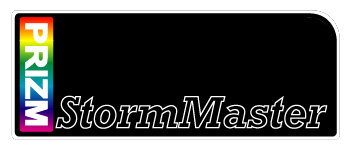
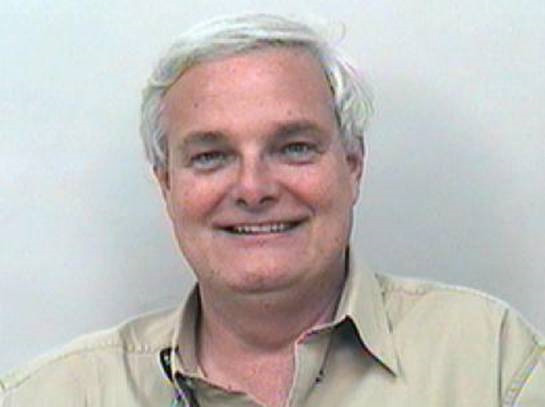 Dale "The Coutimundi" Deardorff
Dale "The Coutimundi" Deardorff
Dale Deardorff a.k.a. “The Coutimundi” took his nickname from the raccoon-e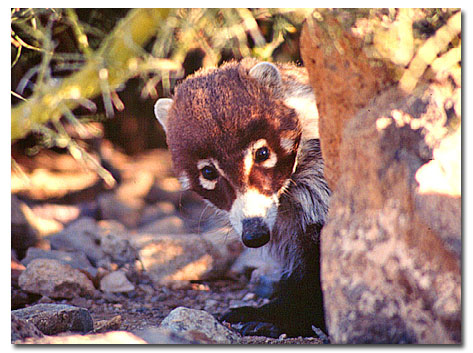 sque creature indigenous to the Americas; the creature is capable of climbing up and down and around trees from any angle while using its tail to maintain balance, symbolizing Dale’s ability to work at problems from many different angles. The scrappy little creature is sometimes known for its ability to find valuable waste from the neighboring human civilizations, indicating how Dale is willing to break apart problems for valuable solutions. This nickname is particularly poignant due to his training with other innovation toolsets, which gives him the metaphoric long snout to investigate new opportunities fully. The metaphor suggests an ability to guide through many diverse landscapes in the journey to new ideas.
sque creature indigenous to the Americas; the creature is capable of climbing up and down and around trees from any angle while using its tail to maintain balance, symbolizing Dale’s ability to work at problems from many different angles. The scrappy little creature is sometimes known for its ability to find valuable waste from the neighboring human civilizations, indicating how Dale is willing to break apart problems for valuable solutions. This nickname is particularly poignant due to his training with other innovation toolsets, which gives him the metaphoric long snout to investigate new opportunities fully. The metaphor suggests an ability to guide through many diverse landscapes in the journey to new ideas.

